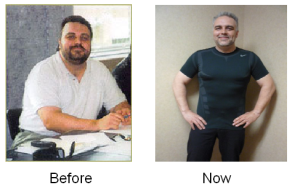The good and bad that you need to know about fat.
In today’s society, fat has become synonymous with unhealthiness and weight gain and if it were a movie, “fat” would be the “bad guy.” Perhaps the negativity of trans fat in the media has created an alarming mindset among youth and adults that all fat is bad and it should be limited in the diet. There are also many diets that are promoting to be healthy but are based on complete exclusion of fat for the purpose of weight loss. Canada’s Food Guide to Healthy Eating recommends a well balanced diet to ensure dietary requirements of macronutrients (carbohydrates, proteins and fats) and micronutrients (vitamins and minerals) are met. It is important to be fat-knowledgeable…after all being aware is the first step in adopting healthy dietary habits.
Fat is a macronutrient that provides energy to the body where 1 gram offers 9 calories (37 kJ) of energy…but what does this really mean? Each individual has a certain caloric requirement depending on their age, gender and level of physical activity. Carbohydrate, protein and fat are all energy-providing molecules and their daily requirement is based on ‘Acceptable Macronutrient Distribution Ranges’ (AMDR), a value that expresses each macronutrient need as a percentage of total daily calories. For fat, the AMDR value is 20-35%, which means that 20-35% of total daily calories should come from fat sources. Within this range, it is recommended that saturated fats should be no more than 10% of the total fat consumed.
Generally, the “bad” fats are associated with saturated fats. Biochemically, these molecules have no double bonds, allowing them to be ‘saturated’ with hydrogen bonds and making their composition to be solids at room temperature. Sources of saturated fats include vegetable oils (coconut oil, palm kernel oil), dairy products (butter, milk, cheese) and animal fat (beef and pork). Saturated fats have been linked with increasing blood cholesterol levels and pose as a risk factor for cardiovascular disease. For this reason, it is advised for saturated fats to be consumed within moderation.
The good quality fats are unsaturated fatty acids, monounsaturated fatty acids (MUFAs) and polyunsaturated fatty acids (PUFAs). Their chemical structure is kinked due to the presence of double bonds and so they generally appear to be liquid at room temperature. Sources of MUFAs include plant oils (olive oil, canola oil, peanut oil), cashews and avocados while sources of PUFAs are soybean, sunflower, safflower, flaxseed, walnut and corn. Unsaturated fatty acids have been researched to lower levels of low density lipoproteins (LDL) cholesterol –the bad cholesterol and increase levels of high density lipoproteins (HDL) cholesterol- the good cholesterol. High levels of LDL cholesterol have been associated with increased risk of heart disease. Omega-3 fatty acids which are unsaturated fatty acids have been a great nutritional interest in recent years. Eicosapentaenoic acid (EPA) and Docosahexaenoic acid (DHA) are common omega-3 fatty acids found in fish that have been proposed to lower blood lipid levels. PUFAs have also been shown to speed up metabolism and many researchers consider EPA and DHA to promote body fat loss.
Many individuals take on low fat diets to reduce the risk of chronic diseases. An important consideration is that specialized low fat diets are designed at the expense of increased carbohydrate and protein. In fact high carbohydrates in the diet may result in excess sugar which gets converted into fat. So before going on a low fat diet- it is important to consider how the caloric balance will be maintained. The type of fat varies in each food, but generally it is understood that animal fats are composed up to 40-60% of saturated fats whereas plant-based fats supply 80-90% of their energy from MUFAs and PUFAs. For this reason, plant based diets tend to have lower levels of saturated fats than other diets.
Fats are a macronutrient and are required for necessary cellular and biological functions such as energy fueling, insulation, production of hormones and absorption of fat soluble vitamins. It is recommended that instead of limiting or excluding fat in the diet, you should choose the healthier fats… Consuming foods rich in PUFA and MUFA and limiting the amount of saturated fat in the diet is a good step in developing healthy eating habits.
References:
Thomspon J, Manroe M and Sheeshka J. Nutrition-a functional approach. Toronto: Pearson Canada Inc, 2007. Print
Gropper SS, Smith JL and Groff JL. Advanced Nutrition and Human Metabolism. Belmont, CA: Thomspon/Wadsworth, 2004. Print.
Mozaffarian D, Katan MB, Ascherio A et al. Trans Fatty Acids and Cardiovascular Disease. The New England Journal of Medicine. 2006;354:1601-1613.
Appel LJ, Sacks FM, Carey VJ et al. Effects of Protein, Monounsaturated fat, and Carbohydrate intake on blood pressure and serum lipids. Journal American Medical Association. 2005;294:2455-2464.











